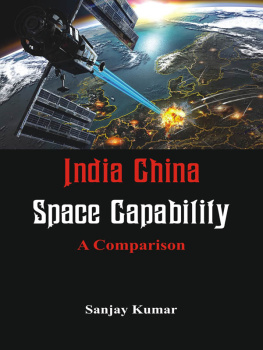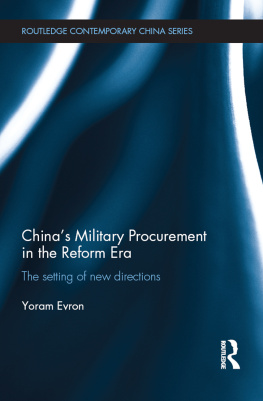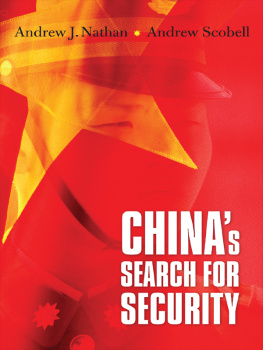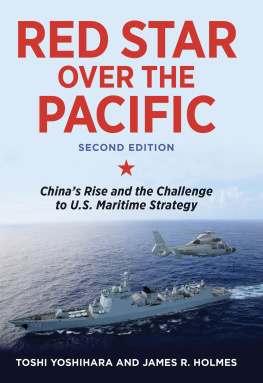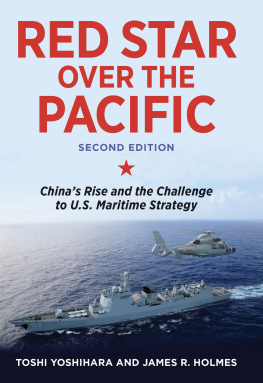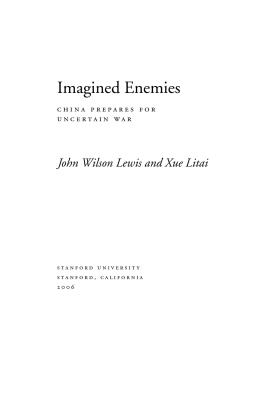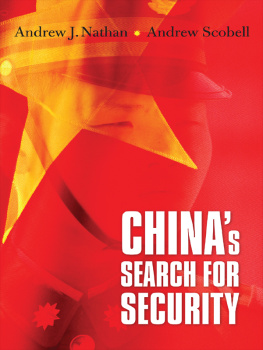Visit our website for other free publication
downloads
http://www.StrategicStudiesInstitute.army.mil/
To rate this publication click here.
THE PLA AT HOME AND ABROAD:
ASSESSING THE OPERATIONAL CAPABILITIES OF CHINAS MILITARY
Roy Kamphausen
David Lai
Andrew Scobell
Editors
June 2010
The views expressed in this report are those of the authors and do not necessarily reflect the official policy or position of the Department of the Army, the Department of Defense, or the U.S. Government. Authors of Strategic Studies Institute (SSI) publications enjoy full academic freedom, provided they do not disclose classified information, jeopardize operations security, or misrepresent official U.S. policy. Such academic freedom empowers them to offer new and sometimes controversial perspectives in the interest of furthering debate on key issues. This report is cleared for public release; distribution is unlimited.
*****
This publication is subject to Title 17, United States Code, Sections 101 and 105. It is in the public domain and may not be copyrighted.
*****
Comments pertaining to this report are invited and should be forwarded to: Director, Strategic Studies Institute, U.S. Army War College, 122 Forbes Ave, Carlisle, PA 17013-5244.
*****
All Strategic Studies Institute (SSI) publications may be downloaded free of charge from the SSI website. Hard copies of this report may also be obtained free of charge by placing an order on the SSI website. The SSI website address is:
www.StrategicStudiesInstitute.army.mil .
*****
The Strategic Studies Institute publishes a monthly e-mail newsletter to update the national security community on the research of our analysts, recent and forthcoming publications, and upcoming conferences sponsored by the Institute. Each newsletter also provides a strategic commentary by one of our research analysts. If you are interested in receiving this newsletter, please subscribe on the SSI website at www.StrategicStudiesInstitute.army.mil / newsletter/.
ISBN 1-58487-448-1
CONTENTS
Foreword ............................................................................... v
1.Introduction .....1
David Lai
2.The Peoples Liberation Army and the Changing
Global Security Landscape ..........................................45
Paul H. B. Godwin
3.Discourse in 3-D: The PLAs Evolving Doctrine,
Circa 2009 .......................................................................99
Andrew Scobell
4.Changing Civil-Military Relations in China ....
You Ji and Daniel Alderman
5.Towards an Integrative C4ISR System:
Informationization and Joint Operations in the
Peoples Liberation Army ..........................................193
Kevin Pollpeter
6.The Peoples Liberation Army and Chinas
Internal Security Challenges .................................
Harold M. Tanner
7.Chinese Sea Power in Action: The Counter
Piracy Mission in the Gulf of Aden and Beyond ....
Andrew S. Erickson
8.Peoples Liberation Army and Peoples Armed
Police Ground Exercises with Foreign Forces,
2002-2009............................................................... ........
Dennis J. Blasko
9.Military Exchanges with Chinese Characteristics:
The Peoples Liberation Army Experience
with Military Relations ...............................................429
Heidi Holz and Kenneth Allen
10.Emerging Grand Strategy for Chinas Defense
Industry Reform ..........................................................
Eric Hagt
11.Taming the Hydra: Trends in Chinas Military
Logistics Since 2000 ....................................................
Susan M. Puska
About the Contributors .....................................................637
FOREWORD
It is a distinct honor to write the foreword to this volume dedicated to Ambassador James R. Lilley. I am proud that the George H. W. Bush School of Government and Public Service at Texas A&M Universityalong with the National Bureau of Asian Research and the U.S. Army War Collegewas one of the sponsoring institutions of the September 2009 Conference on the Peoples Liberation Army. For the 11th consecutive year, the event has been held at Carlisle Barracks, Pennsylvania.
It is entirely appropriate that this book of papers presented at the 2009 conference be dedicated to Jims memory. He had been closely involved in this series of conferences from the very start; indeed, Jim was the driving force behind the instigation of this enterprise back in the early 1990s. Jim believed that it was important to gather leading specialists on Chinas military on a regular basis away from the hustle, bustle, and hype of Washington for serious, objective, and in-depth analysis of the subject. Jim was a man ahead of his time in that he recognized the importance of carefully monitoring and documenting the modernization of Chinas military. Moreover, he was committed enough to seek funding, commission experts to write research papers, and ensure the proceedings were published. The result is an entire bookshelfs worth of high quality edited volumes that are invaluable reference works for policymakers, analysts, scholars, and students.
This volume and many others stand as part of Jim Lilleys enduring legacy and as testament to the impact that a single determined individual can have on U.S. policy. With the passing of Jim Lilley in October 2009, the United States lost one of its most dedicated public servants and an extremely talented China hand. And I lost an old and loyal friend.
While Jim, of course, needs no introduction to the contributors to this volume and many readers, it is worth mentioning some of the highlights of his extremely eventful life and long history of selfless service to this country. Jim was a China hand literally from the day he was born in Shandong Province and grew up speaking Chinese. Jims career of government service began in the military and continued in the intelligence community, with a major focus on China. Later, he shifted to a career as a diplomat. In the early 1980s Jim took the post of chief of the American Institute in Taiwan, the de facto U.S. Embassy in Taipei. Shortly thereafter, he ably served as U.S. ambassador in two Asian capitals at times of considerable political upheavalfor 3 years in Seoul, Korea, followed by 2 years in Beijing. The latter posting was during my administration and took place at an especially difficult time in Americas relationship with China during the tragedy of Tiananmen Square and its aftermath. Simply put, Jim did an outstanding job.
After such a distinguished career, Jim richly deserved a restful retirement. But leaving government service in 1991 did not mean sitting back in a rocking chair. Jim lived in the Washington area, where he remained an active participant in policy debates on China and Korea and a keen sponsor and lively participant in this conference series.
While Jim never got to see this volume or attend last years conference, I am confident that he would have been extremely satisfied with the results. I commend this fine collection to anyone interested in the military and security affairs of China.
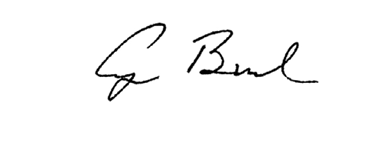
GEORGE H. W. BUSH
CHAPTER 1
INTRODUCTION
David Lai
The final years of the 2000s turned out to be quite eventful for the Peoples Republic of China (PRC and China interchangeably) and its armed forces, the Peoples Liberation Army (PLA). While there were exciting events for them to celebrate, there were disturbing ones for them to worry about as well.


